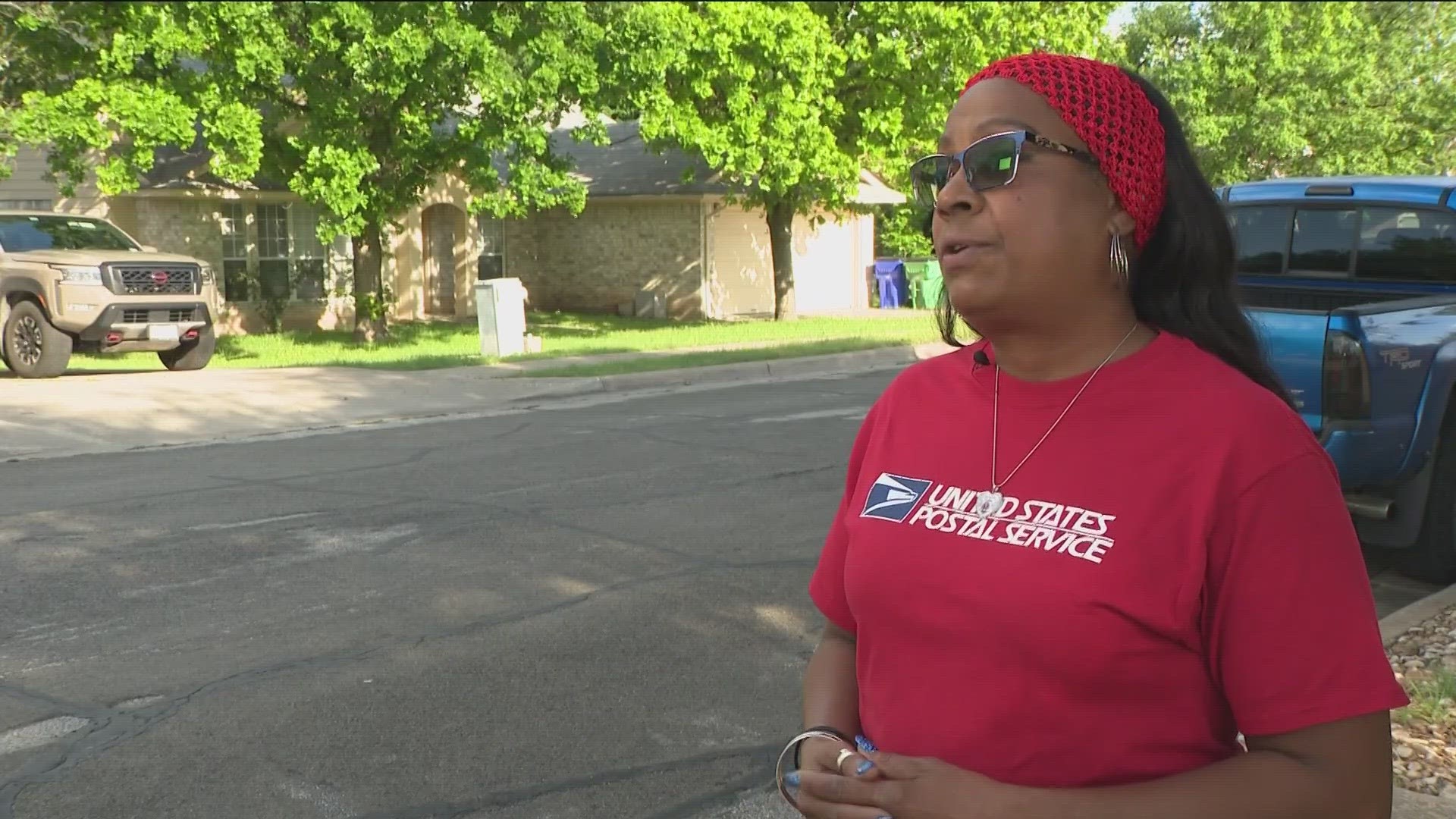CEDAR PARK, Texas — Some U.S. Postal Service (USPS) carriers nationwide are seeing major pay cuts, losing anywhere from $10,000 to $30,000 a year in some cases, after a fight between the postal service and unions.
Carriers all over the nation have taken to social media to share the amounts they say their pay is being dialed back to and are asking others for advice on what to do next.
Through rain, snow, sleet or hail, USPS carrier Shelon Williams said she takes great pride in making sure customers on her route get what they need.
"People get medications, they get monitors or something, or anything they need. You know, they get dog food for their pets. And we have to make sure it gets there on time," Williams said.
However, she said she, along with thousands of drivers nationwide, is facing reduced hours and pay cuts in the tens of thousands.
Her salary is nearly $70,000 a year. But through the new cuts, her new guaranteed annual pay is $56,834, meaning she could see upwards of $15,000 a year cut from her salary.
But that's not the only problem.
Williams said she is going from 46 hours over a five-day week to 37 hours over six days, meaning fewer hours and fewer days off, now requiring her to work all six days the post office operates and keeping her from the option to get overtime on her off day, which used to be Thursdays. Even with the fewer hours on paper, some mail carriers have told KVUE News they expect to still have to work the same hours to get their routes done, but don't expect to get paid for them like they used to.
USPS spokesperson Becky Hernandez said in a statement to KVUE:
"The compensation system for rural letter carriers is a nationally negotiated pay system codified in the parties’ National Agreement. The current modifications to the compensation system were the result of a previous interest arbitration proceeding and mandated by an interest arbitrator. The parties worked jointly for years to implement these new provisions and will continue to share data and information throughout the implementation process.”
"I had Thursday off, so my Thursday, I can make that choice of if I want to stay home or do I want to go in and help and get the overtime. But with me going to this now, it's like, what do I do?" Williams said.
Williams said another problem she and other carriers face is tied to a new scanning system that's supposed to better track rural routes. She said it's not completely accurate. She describes it as a scanner that essentially tracks the carriers' every move, from their steps to when they get in and out of the truck and more tracking of their routes. It is a part of the new Rural Route Evaluated Compensation System.
She said this automated system claims she only hits 71% of her route when she knows she covers it from start to finish.
Her route takes about nine hours to complete, but with her new schedule spread over six days, she's expected to get this done now in about six hours each day.
"With me dropping to a 37, I would have to kind of reroute and recuperate. 'OK, well, how am I going to make this work every day?'" Williams said.
She said this is going to affect many drivers and their families.
"The prices are going up, from food to houses and cars. What am I going to do? Am I going to stay and work these 37 hours and then every day have to force myself to do overtime?" she said.
The rural mail carriers' union said it's still working with USPS on this system and an agreement in good faith for its rural drivers, but Williams hopes something can be done for herself and her fellow carriers sooner rather than later.

